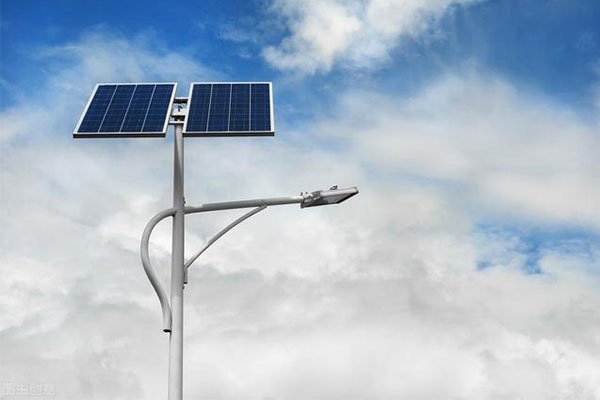Connecting solar flood lights1 correctly is essential to ensure safety, efficiency, and longevity. By selecting the right fuse and wire gauge, you can avoid hazards like overheating, fire risks, and inefficiencies. This guide will walk you through the process of connecting your solar flood lights safely and efficiently.
Properly connecting solar flood lights1 is crucial for ensuring they work at their best. By choosing the right components, you can reduce risks like overheating and ensure maximum efficiency.
Now, let’s dive deeper into the steps and key considerations to keep in mind when setting up your solar flood lights1.
Why Proper Connection of Solar Flood Lights Matters?
When installing solar flood lights, proper connections are essential to prevent hazards such as overheating, electrical fires, or energy inefficiency. Incorrect wiring or selecting the wrong components can lead to failures in the system, reducing the overall performance of your solar lights.
In addition, using the wrong fuse or wire gauge can also compromise safety, increasing the likelihood of damage to the solar panels or batteries. It’s critical to understand the importance of choosing the correct fuse and wire gauge, both of which help prevent these risks.
Moreover, adherence to local electrical codes ensures that your installation is legal and compliant, avoiding fines or the voiding of warranties.
Step 1: Understanding the Role of a Fuse in Solar Flood Lights
What is a Fuse?
A fuse is a safety device that prevents an electrical circuit from overloading. It contains a wire that melts when the current flowing through the circuit exceeds a certain limit, thereby breaking the connection and stopping the flow of electricity.
Why is the Right Fuse Important?
The right fuse is essential to protect your solar flood lighting system from overheating and potential damage. If a fuse is too large, it may not trip in time to protect the system from a dangerous overload. Conversely, a fuse that is too small may blow unnecessarily, disrupting the system’s functionality.
How to Choose the Right Fuse Size:
To determine the appropriate fuse size, you can use the following formula:
Appliance Ampere Rating × 125%.
This calculation helps to ensure that the fuse can handle the normal load while providing enough protection in case of a surge. It’s also important to consider whether the appliance is continuous or non-continuous, as the fuse size requirements may differ.
Step 2: Selecting the Right Wire Gauge for Solar Flood Lights

What is Wire Gauge?
Wire gauge refers to the thickness of the wire used in the electrical system. The gauge number indicates the wire's diameter; the lower the number, the thicker the wire. Choosing the right wire gauge2 is crucial for ensuring the system’s safety and efficiency.
How to Choose the Correct Wire Gauge:
Several factors should be considered when selecting the appropriate wire gauge2, including the wire length and amperage requirements. As the wire length increases, the voltage drops, which can lead to energy loss. To prevent this, thicker wires are often required for longer distances.
For instance, using a wire that is too thin can cause heat buildup, resulting in inefficiency and even potential fire hazards. To choose the correct wire gauge, calculate the total amperage of your system and ensure that the wire gauge is appropriate for carrying that load.
Common Issues with the Wrong Wire Gauge:
- Heat loss: Thin wires cause resistance, leading to heat generation and energy loss.
- Inefficiency: The wrong wire size can prevent your solar system from transmitting the necessary power efficiently, reducing the effectiveness of your lights.
Step 3: How to Connect Solar Flood Lights Safely
Correct Wiring Procedure
When connecting your solar flood lights1, following the correct wiring procedure is essential for safety. Here’s a simple step-by-step guide:
- Power Off: Always ensure that the system is powered off before starting any wiring work.
- Connect the Solar Panel: Attach the wires from the solar panel to the charge controller. The positive and negative terminals should match the respective connections on the charge controller.
- Connect the Charge Controller to the Battery: The charge controller regulates the flow of electricity to the battery. Be sure to connect the positive and negative terminals from the controller to the battery correctly.
- Connect the Battery to the Light: Finally, connect the battery to the flood light, ensuring the positive and negative connections are properly aligned.
Connection Tips:
- Proper Insulation: Make sure all connections are properly insulated to prevent accidental shorts.
- Secure Connections: Ensure that all wires are securely fastened to prevent any loose connections that could lead to overheating or short circuits.
- Handling Components: Handle each component with care, especially when dealing with solar panels, batteries, and charge controllers.
Safety First
It’s always a good idea to work with a certified electrician or a professional to ensure that the installation is safe and compliant with local electrical codes. Professionals can help avoid mistakes that could compromise the system's efficiency or safety.
Step 4: Troubleshooting Common Issues with Solar Flood Light Connections

Despite careful installation, issues can still arise in solar flood light systems. Here are some common problems and how to address them:
Overheating of Wires
- Cause: Using the wrong wire gauge2 can lead to excess heat generation.
- Solution: Ensure the wire gauge matches the system's amperage requirements. If overheating persists, consider replacing the wire with a thicker gauge.
Fuse Blowing Frequently
- Cause: A fuse may blow if it is too small for the system's amperage.
- Solution: Use the formula mentioned earlier to select the correct fuse size. If the fuse continues to blow, check for other issues like faulty components or improper wiring.
Low Efficiency in Power Transmission
- Cause: Resistance in the wiring, often due to too thin a wire gauge, can lead to power loss.
- Solution: Ensure the correct wire gauge is used and check for any loose connections that may be causing inefficiencies.
Expert Recommendations for Maximum Efficiency
Choosing the Right Components:
For the best results, always choose high-quality fuses, wires, and other components. Quality materials ensure that the system operates efficiently, lasts longer, and remains safe.
Professional Help:
Consulting with a certified electrician is essential for ensuring that your installation complies with local codes and operates safely. While DIY installations can be tempting, professional help reduces the risk of errors that could compromise the system's performance.
Conclusion

Correctly selecting the right fuse3 and wire gauge2 is key to ensuring the safety and efficiency of your solar flood light installation. It’s crucial to understand how these components affect your system's performance and to follow best practices for installation. Always consider consulting an expert to ensure a safe, compliant, and high-performing setup.
Make sure to consult with a professional before finalizing your solar flood light connection to guarantee long-term efficiency and safety.
Explore this resource to learn essential installation tips and best practices for solar flood lights, ensuring safety and efficiency. ↩ ↩ ↩ ↩
Discover why selecting the correct wire gauge is vital for safety and efficiency in solar flood light systems, preventing overheating and energy loss. ↩ ↩ ↩ ↩
This link will provide you with detailed guidance on selecting the appropriate fuse size, crucial for protecting your solar lighting system. ↩







